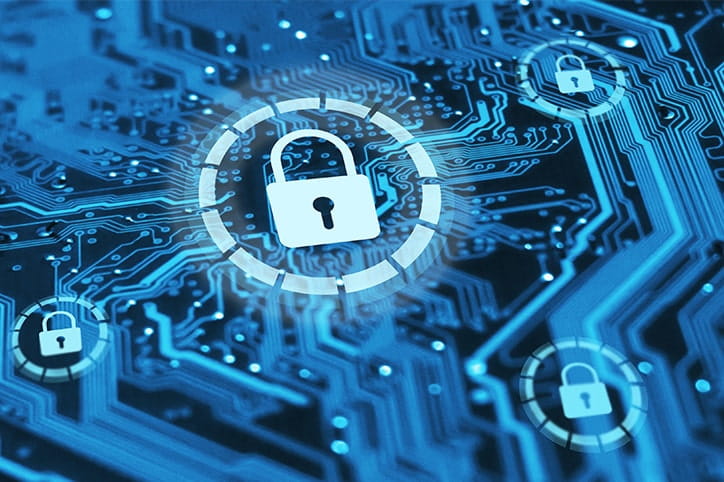
Why Cybersecurity Matters More Than Ever in Education
It’s mid-morning and your phone rings.
A parent is on the line, worried. They’ve just received a strange message that looks like it came from your setting, asking them to click a link to update their child’s medical details.
Moments later, another parent calls. Then another.
That’s when you realise: something’s wrong. Someone has accessed your systems. And they’re using your name and your families’ trust to cause harm.
In today’s world, cybercrime doesn’t just lock you out, it lets criminals in. And in sectors like early years and education, the fallout can be personal, reputational, and deeply distressing.
Why the Education Sector is a Target
It’s tempting to think, “We’re not a big organisation, why would we be targeted?” But for cybercriminals, status isn’t always the motive. The real driver is data and, in our sector, data is both rich and highly sensitive.
Child records. Medical information. Safeguarding notes. Parent contact and payment details. Education and childcare providers handle precisely the kind of personal information that can be exploited, sold, or held to ransom.
High-profile attacks on major names like M&S and Capita might dominate the headlines, but almost 40% of UK small businesses experienced a cyber incident in 2024 and education continues to be viewed as a high-value, lower-risk target.
Digital Safeguarding is Still Safeguarding
We’re used to thinking about safeguarding in physical terms - secure environments, DBS checks, emergency procedures. But in today’s world, digital safeguarding must sit alongside these responsibilities.
Cybersecurity is not just about protecting data, it’s about ensuring the continuity of care, preserving trust with families, and maintaining your ability to operate. A successful attack could:
- Interrupt your ability to deliver care or lessons
- Expose children’s and families’ personal information
- Trigger regulatory reporting or safeguarding concerns
- Damage your reputation, funding, or inspection outcomes
And in the eyes of parents, a breach in data is still a breach in trust.
Third-Party Tools Don’t Remove Responsibility
Most settings now use third-party platforms to manage day-to-day tasks, such as registers, billing, communications, and safeguarding logs. These systems often have robust security features and are updated regularly to stay ahead of threats. That investment is critical… and reassuring.
But using secure tools doesn’t make you immune.
Cybercriminals don’t always need to breach the platform. They often exploit human behaviours. Most commonly, weak passwords, missed updates, poor access controls. And if something does go wrong, it’s your setting that will be held accountable.
Technology is only as secure as the people and processes behind it.
How Attacks Happen
Most breaches rely on simplicity, not sophistication. Common attack methods include:
- Phishing emails – Messages disguised as legitimate sources to harvest logins or trick staff into clicking harmful links.
- Ransomware – A form of malware that encrypts your data until a ransom is paid.
- Outdated software – Old systems with unpatched vulnerabilities that criminals can exploit.
- Weak or reused passwords – Among the most preventable but widespread security gaps.
These issues often stem from the same source: human error. And in busy, high-pressure environments, even the best of us can slip up.
Empowering Your Team to Be Digitally Confident
Cybersecurity doesn’t require advanced technical knowledge - it requires awareness, teamwork, and calm procedures.
✓ Build basic digital safety into your annual CPD
✓ Share clear, non-blame processes for reporting concerns
✓ Encourage open conversations about risks and ‘near misses’
✓ Practise how you’d respond to a breach as part of team training
Imagine being a parent who receives a message saying your child’s personal data may have been compromised. Reassuring families starts long before a crisis; with the transparency, systems, and habits we build today.
Five Practical Steps to Protect Your Setting
If you’re not sure how secure your current systems are, start here:
- Run a Cybersecurity ‘MOT’ - Use free tools or paid assessments to check for vulnerabilities in your networks and devices.
- Back Up Your Data Regularly - Ideally, use encrypted cloud storage or an off-site location to protect against loss.
- Use Layered Security - Combine firewalls, antivirus software, and multi-factor authentication to strengthen your defences.
- Create and Share a Cyber Incident Plan - Everyone should know what to do in the event of a suspected breach—who to inform, what steps to take, and how to minimise harm.
- Speak to Your Insurance Provider - Many now offer cyber support, risk assessments, or breach response tools as part of their cover.
In some cases, data breaches must also be reported to the ICO and may trigger safeguarding obligations under statutory frameworks such as Keeping Children Safe in Education (KCSIE). Preparation helps you act quickly, calmly, and correctly.
Trust is the True Target
At the heart of your organisation is a community of children, families, and professionals who rely on you. Cybersecurity might sound abstract, but it’s directly tied to your ability to keep that community safe, reassured, and supported.
Being proactive about your digital environment shows that you value the trust placed in you, just as much as the care you provide.
Final Thought: It’s Time to Make Cyber Part of the Conversation
Whether you run a home-based setting, a nursery, a school, or a wider group of settings, cybersecurity may feel like just one more task on your list but it’s increasingly vital to safe, professional practice.
You don’t need to overhaul everything overnight. Start small. Involve your team. Review what you already have in place and build on it.
Why not make cybersecurity a topic at your next staff meeting, or governance review?
It’s a safeguarding conversation you can’t afford to postpone.
Because today, protecting children means protecting them in every environment; physical, emotional, and digital.